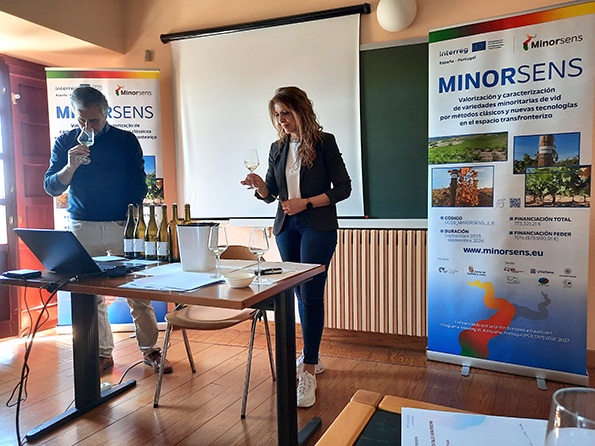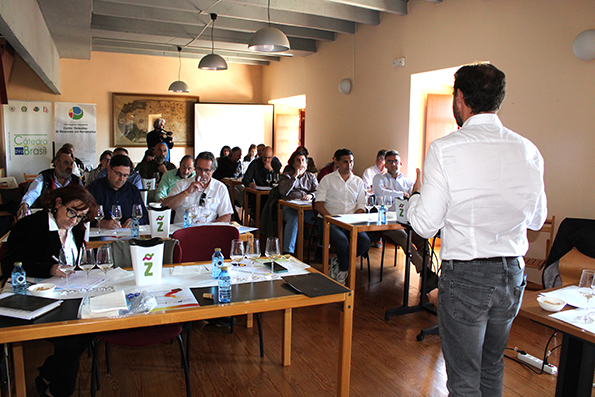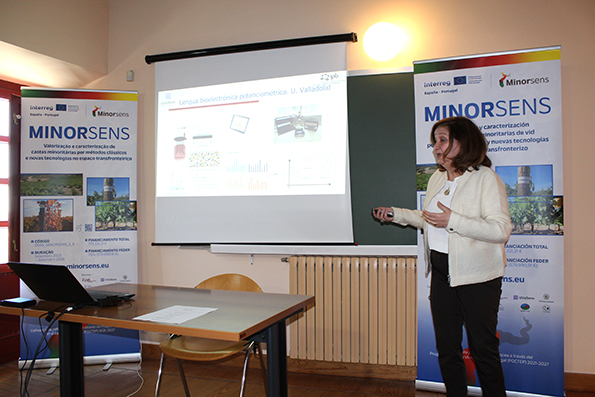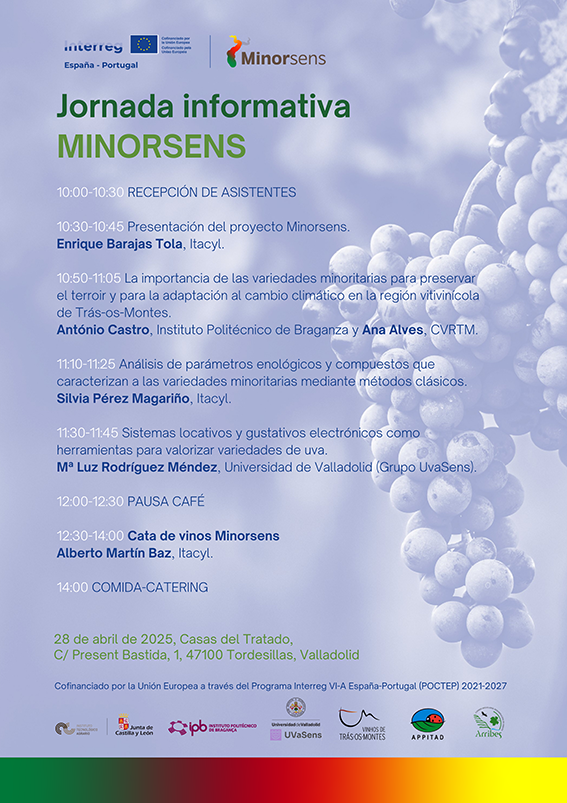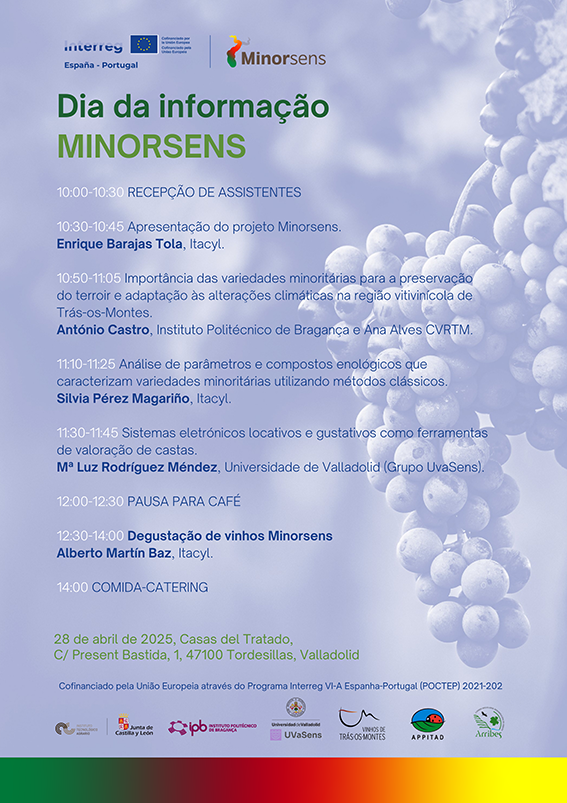We present Minorsens at the FAO (Food and Agriculture Organization)
Last February, the project coordinator of Minorsens presented this project at the International Conference “Global Outlook on Geographical Indications” held by the Food and Agriculture Organization of the United Nations (FAO) in Rome. During the session “Climate Change and Biodiversity,” Enrique Barajas from ITACYL defended the importance of studying and preserving minority grape varieties as a tool for adapting viticulture to climate change. The event was a unique showcase for the work we are doing in the cross-border area between Spain and Portugal to recover autochthonous grape varieties to produce unique and fresh wines able to socioeconomically revitalize their regions of origin.
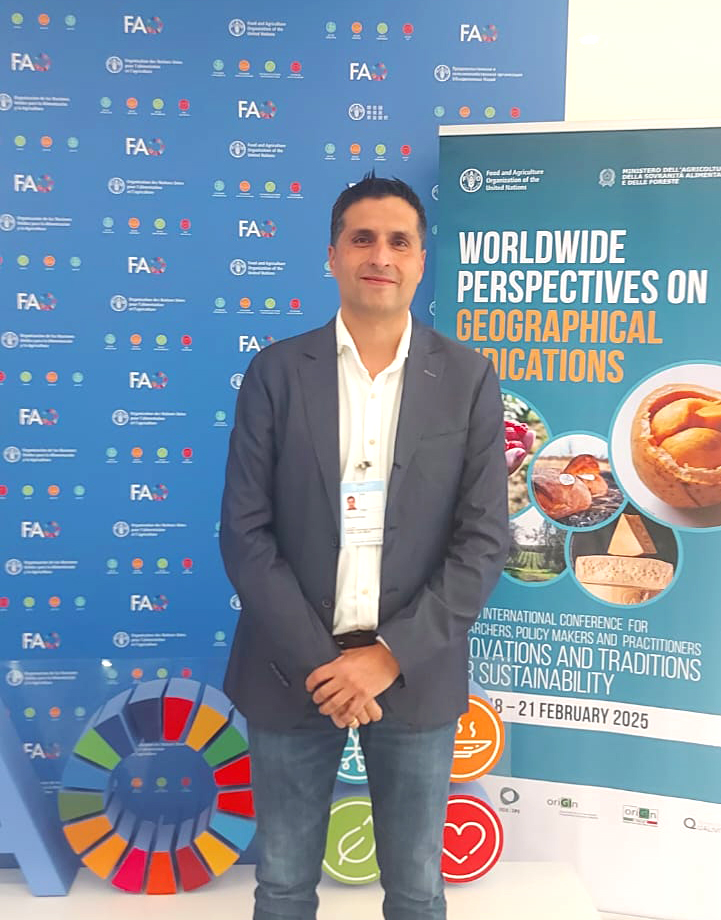
The researcher Enrique Barajas presenting Minorsens Project at the FAO headquarters
Presentation of Minorsens to winegrowers and winemakers in the cross-border área
On April 28th, we presented Minorsens and its progress to winemakers, viticulturists and representatives of some of the regulatory councils for the designations of origin in the cross-border region. The event took place at the Treaty Houses of Tordesillas, Valladolid, an emblematic location for the relationship between Spain and Portugal, as there the New World was divided in 1494. The event had two parts: some presentations by the leading researchers working on the project and a tasting of single-varietal wines made with some of the minority varieties we are studying thanks to Minorsens. We had the opportunity to learn about the peculiarities of little-known varieties from Castill y León such as Legiruela, Puesta en Cruz, Gajo Arroba, Puesto Mayor, Estaladiña, and Cenicienta, and from the northern region of Portugal such as Samarrinho, Tinta Gorda, Cornifesto and Tinto Cão. It was a rich exchange of knowledge and experiences regarding field handling, winery production and consumer acceptance.
On April 28th, we presented Minorsens and its progress to winemakers, viticulturists and representatives of some of the regulatory councils for the designations of origin in the cross-border region. The event took place at the Treaty Houses of Tordesillas, Valladolid, an emblematic location for the relationship between Spain and Portugal, as there the New World was divided in 1494. The event had two parts: some presentations by the leading researchers working on the project and a tasting of single-varietal wines made with some of the minority varieties we are studying thanks to Minorsens. We had the opportunity to learn about the peculiarities of little-known varieties from Castill y León such as Legiruela, Puesta en Cruz, Gajo Arroba, Puesto Mayor, Estaladiña, and Cenicienta, and from the northern region of Portugal such as Samarrinho, Tinta Gorda, Cornifesto and Tinto Cão. It was a rich exchange of knowledge and experiences regarding field handling, winery production and consumer acceptance.
